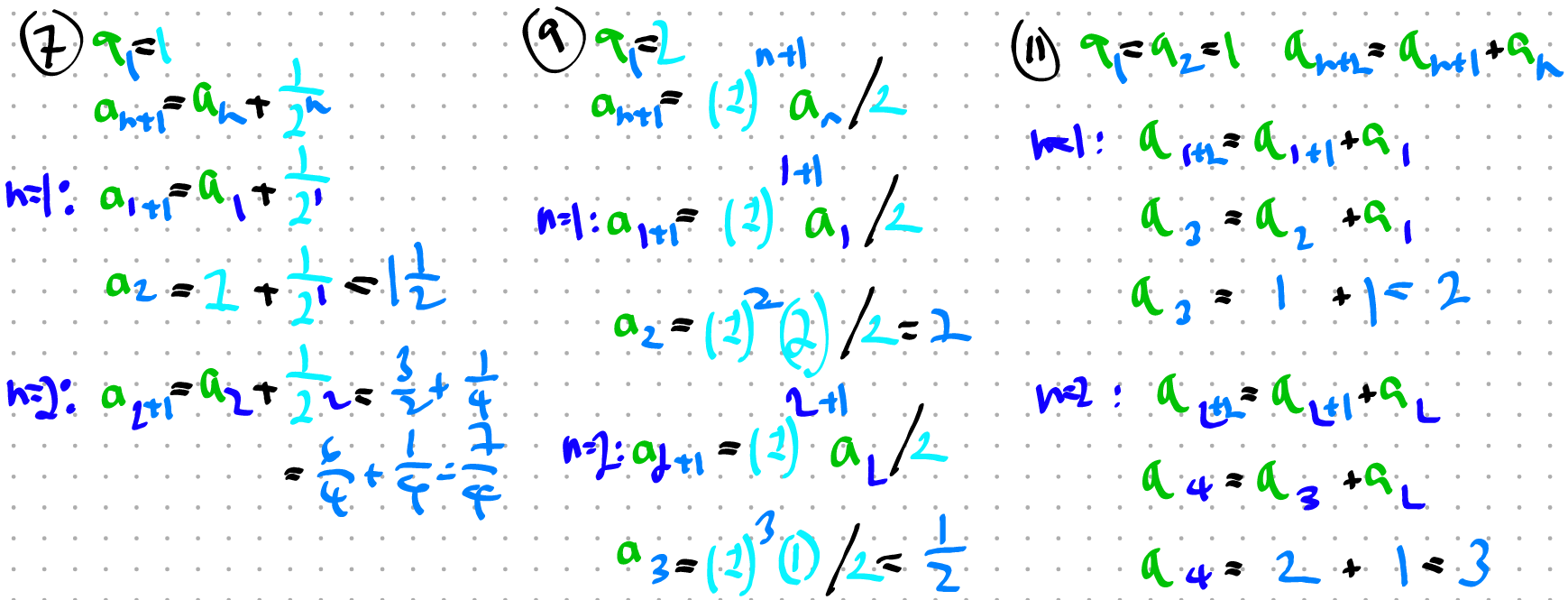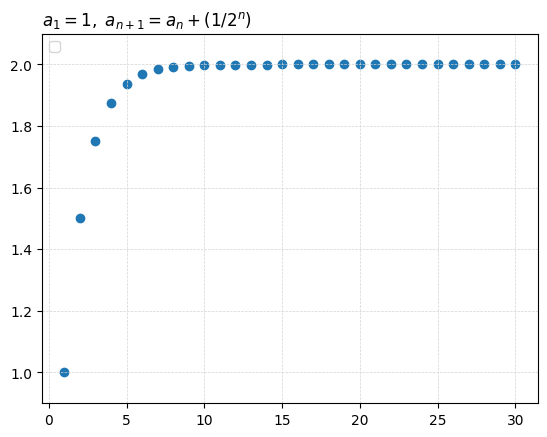[(1, 1),
(2, 1.5, Fraction(3, 2)),
(3, 1.75, Fraction(7, 4)),
(4, 1.875, Fraction(15, 8)),
(5, 1.9375, Fraction(31, 16)),
(6, 1.96875, Fraction(63, 32)),
(7, 1.984375, Fraction(127, 64)),
(8, 1.9921875, Fraction(255, 128)),
(9, 1.99609375, Fraction(511, 256)),
(10, 1.998046875, Fraction(1023, 512)),
(11, 1.9990234375, Fraction(2047, 1024)),
(12, 1.99951171875, Fraction(4095, 2048)),
(13, 1.999755859375, Fraction(8191, 4096)),
(14, 1.9998779296875, Fraction(16383, 8192)),
(15, 1.99993896484375, Fraction(32767, 16384)),
(16, 1.999969482421875, Fraction(65535, 32768)),
(17, 1.9999847412109375, Fraction(131071, 65536)),
(18, 1.9999923706054688, Fraction(262143, 131072)),
(19, 1.9999961853027344, Fraction(524287, 262144)),
(20, 1.9999980926513672, Fraction(1048575, 524288)),
(21, 1.9999990463256836, Fraction(2097151, 1048576)),
(22, 1.9999995231628418, Fraction(4194303, 2097152)),
(23, 1.999999761581421, Fraction(8388607, 4194304)),
(24, 1.9999998807907104, Fraction(16777215, 8388608)),
(25, 1.9999999403953552, Fraction(33554431, 16777216)),
(26, 1.9999999701976776, Fraction(67108863, 33554432)),
(27, 1.9999999850988388, Fraction(134217727, 67108864)),
(28, 1.9999999925494194, Fraction(268435455, 134217728)),
(29, 1.9999999962747097, Fraction(536870911, 268435456)),
(30, 1.9999999981373549, Fraction(1073741823, 536870912))]

